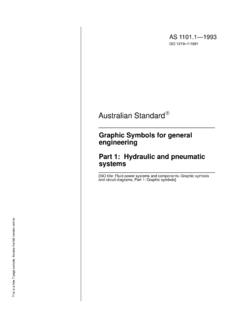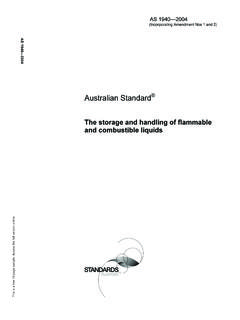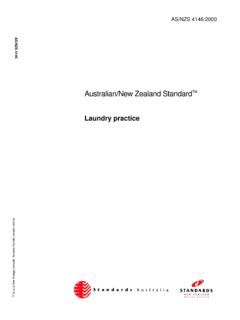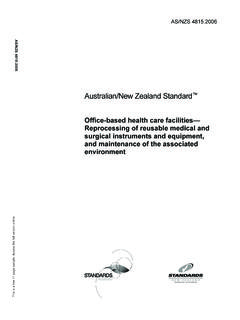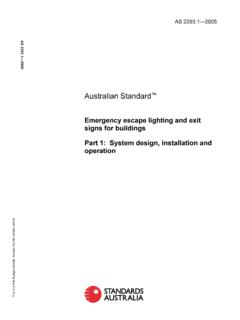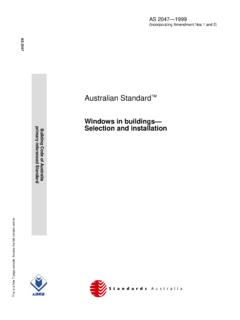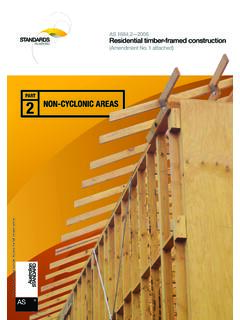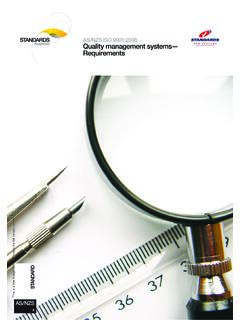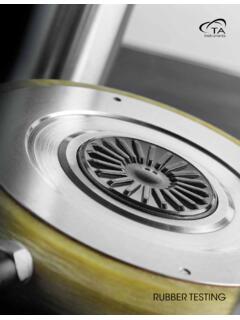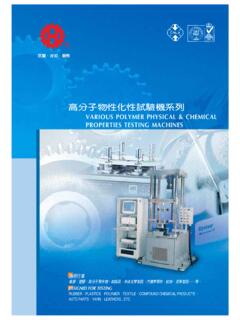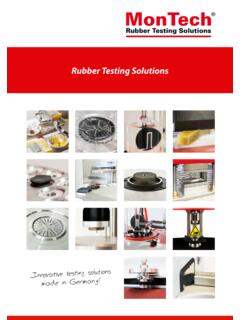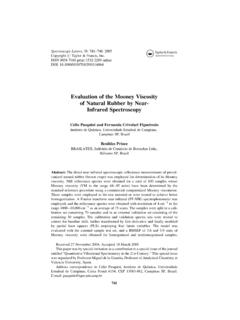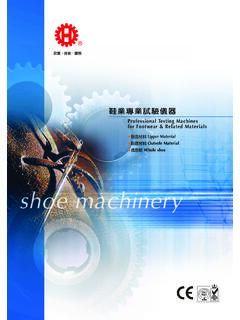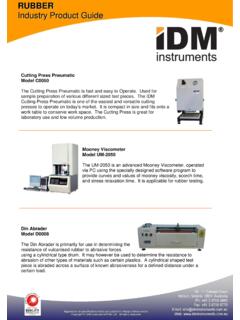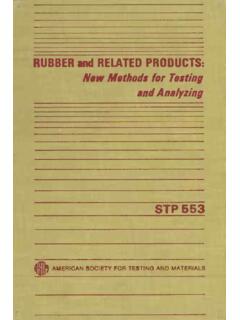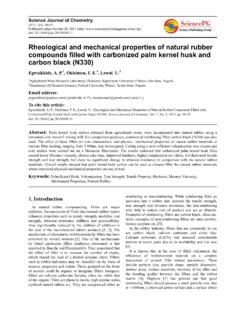Transcription of Rubber, unvulcanized - Determinations using a …
1 INTERNATIONAL STANDARD First edition 1994-07-01 rubber , unvulcanized - Determinations using a shearing-disc viscometer - Part 1: Determination of mooney viscosity Caoutchouc non vulcanisb - 06 termina tions u tilisan t un consis tom& tre a disque de cisaillement - Partie 1: Determination de I indice consistombtrique mooney Reference number ISO 289-1 :1994(E) is a free 4 page sample. Access the full version 289=1:1994(E) Foreword ISO (the International Organization for Standardization) is a worldwide federation of national Standards bodies (ISO member bodies). The work of preparing International Standards is normally carried out through ISO technical committees. Esch member body interested in a subject for which a technical committee has been established has the right to be represented on that committee. International organizations, governmental and non-governmental, in liaison with ISO, also take part in the work.
2 ISO collaborates closely with the International Electrotechnical Commission (1 EC) on all matters of electrotechnical standardization. Draft International Standards adopted by the technical committees are circulated to the member bodies for voting. Publication as an International Standard requires approval by at least 75 % of the member bodies casting a vote. International Standard ISO 289-1 was prepared by Technical Committee ISO/TC 45, rubber and rubber products, Subcommittee SC 2, Physical and degrada tion tes ts. lt cancels and replaces the first edition of ISO 289 (ISO 289:1985), of which it constitutes a technical revision. ISO 289 consists of the following Parts, under the general title rubber , unvulcanized - De termina tions using a shearing-disc viscome ter. - Part 1: Determination of Moone y viscosity - Part 2: Determination of pre-vulcaniza tion charac teris tics Annex A of this part of ISO 289 is for information only.
3 0 ISO 1994 All rights reserved. Unless otherwise specified, no part of this publication may be reproduced or utilized in any form or by any means, electronie or mechanical, including photocopying and microfilm, without Permission in writing from the publisher. International Organization for Standardization Case Postale 56 l CH-l 211 Geneve 20 l Switzerland Printed in Switzerland is a free 4 page sample. Access the full version STANDARD 0 ISO ISO 289=1:1994(E) rubber , unvulcanized - Determinations using a shearing-disc viscometer - Part 1: Determination of mooney viscosity 1 Scope This part of ISO 289 specifies a method of use of a shearing-disc viscometer for measuring the mooney viscosity of uncompounded or compounded rubbers. 2 Normative references The following Standards contain provisions which, through reference in this text, constitute provisions of this part of ISO 289.
4 At the time of publication, the editions indicated were valid. All Standards are subject to revision, and Parties to agreements based on this patt of ISO 289 are encouraged to investigate the possibility of applying the most recent editions of the Standards indicated below. Members of IEC and ISO maintain registers of currently valid International Standards. ISO 471 :1983, rubber - Standard temperatures, hu- midities and times for the conditioning and testing of tes t pieces. ISO 1795:1992, rubber , raw, natura1 and synthetic - Sampling and further preparative procedures. ISO 2393:1994, rubber test mixes - Preparation, mixing and vulcaniza tion - Equipment and pro- cedures. ISO 6508:1986, Metallic materials - Hardness test - ockwell test (scales A - 6 - C - D - E - F - G - H - K) . lSO/TR 9272:1986, rubber and rubber products - Determination o f precision for test method Standards. 3 Principle The torque which has to be applied under specified conditions in Order to rotate a metal disc in a cylindri- cal chamber formed from mating dies filled with rub- ber is measured.
5 The resistance offered by the rubber to this rotation is expressed in arbitrary units as the mooney viscosity of the test piece. 4 Apparatus The essential Parts of the apparatus (see figure 1) are: a) two dies to form a cyclindrical cavity; b) a rotor; c) a means for maintaining the dies at a constant temperature; d) a means for maintaining a specified closure pressure; e) a means for rotating the rotor at constant angular velocity; f) a means for indicating the torque required to ro- tate the rotor. The rotor and die cavity have the dimensions shown in table 1. is a free 4 page sample. Access the full version 289-1: 1994(E) 0 ISO Table 1 - Dimensions of essential Parts of the I apparatus Dimensions in millimetres I 1 Dimension Value Rotor diameter Rotor thickness Die cavity diameter Die cavity depth NOTE 1 Normally, a rotor with these dimensions is called a large rotor. It is permissible to use a smaller rotor where high viscosity makes this necessary.
6 This small rotor shall have the same dimensions as the large rotor except that the diameter shall be 30,48 + 0,03. Results ob- tained with the small rotor are not identical with those obtained using the large rotor. Dies The two dies forming the cavity shall be formed from non-deforming unplated hardened steel of minimum Rockwell hardness 60 HRC (see ISO 6508). The di- mensions of the cavity are given in figure 1 and shall be measured from the highest surfaces. For good heat transfer, each die should preferably be made from only one piece of steel. The surfaces shall have radial V-grooves on the flat surfaces to prevent Slippage. The grooves shall be spaced radially at 20 intervals and shall extend from an outer circle of di- ameter 47 mm to an inner circle of diameter 7 mm for the upper die and to within 1,5 mm of the hole in the lower die; each groove shall form a 90 angle in the die surface with the bisector of the angle perpendic- ular to the surface and shall be 1,0 mm + 0,l mm wide at the surface (see figure 2).
7 Rotor The rotor shall be fabricated from non-deforming un- plated hardened steel of minimum Rockwell hardness 60 HRC. The rotor surfaces shall have rectangular- section grooves 0,80 mm + 0,02 mm wide, of uni- form depth 0,30 mm + 0,05 mm and spaced 1,60 mm + 0,04 mm apart (distance between central - axes). The flat surfaces of the rotor shall have two sets of such grooves at right angles to each other (see figure3). The edge of the rotor shall have vertical grooves of the same dimensions. The large rotor shall have 75 vertical grooves and the small rotor shall have 60. The rotor is fastened at right angles to a shaft having a diameter of 10 mm & 1 mm and a length such that, in the closed die cavity, the clearance above the rotor does not differ from that below by more than 0,25 mm. The rotor shaft shall bear on the spindle which turns the rotor shaft, not on the wall of the die cavity.
8 The clearance at the Point where the rotor shaft enters the cavity shall be small enough to prevent rubber leaving the cavity. A grommet, O-ring or other sealing device may be used as a seal at this Point. The eccentricity or runout of the rotor while turning in the viscometer shall not exceed 0,l mm. The angular velocity of the rotor shall be 0,209 rad/s + 0,002 rad/s (2,00 r/min + 0,02 r/min). Heating deviee The dies are mounted on, or form part of, platens equipped with a heating device capable of maintaining the temperature of the platens and that of the dies to within + 0,5 C of the test temperature. After in- sertion of the test specimen the devices shall be ca- pable of returning the temperature of the dies to within rfi 0,5 C of the test temperature within 4 min. NOTE 2 Older machines may not comply with these re- quirements and may give less reproducible results. 44 . Temperature-measurement System The test temperature is defined as the steady-state temperature of the closed dies with the rotor in place and the cavity empty.
9 This temperature is measured by two thermocouple measurement probes, which tan be inserted into the cavity for this purpose as shown in figure4. These measurement probes are also used to check the temperature of the test specimen as described in In Order to control the supply of heat to the dies, a temperature Sensor shall be present in each die to measure the die temperature. The Sensor shall be located for the best possible heat contact with the dies, heat gaps and other heat resistance shall be excluded. The axes of the Sensors shall be at a dis- tance of 3 mm to 5 mm from the working surface of the dies and 15 mm to 20 mm from the rotational axis of the rotor (see figure 1). Both the thermocouple measurement probes and the temperature Sensors shall be capable of indi- cating temperature to an accuracy of & 0,25 C. 2 is a free 4 page sample. Access the full version on the logos to search the database Global also carries a wide range of publications from a wide variety of Standards Publishers:The remainder of this document is available for purchase online at is a free 4 page sample.
10 Access the full version online.

